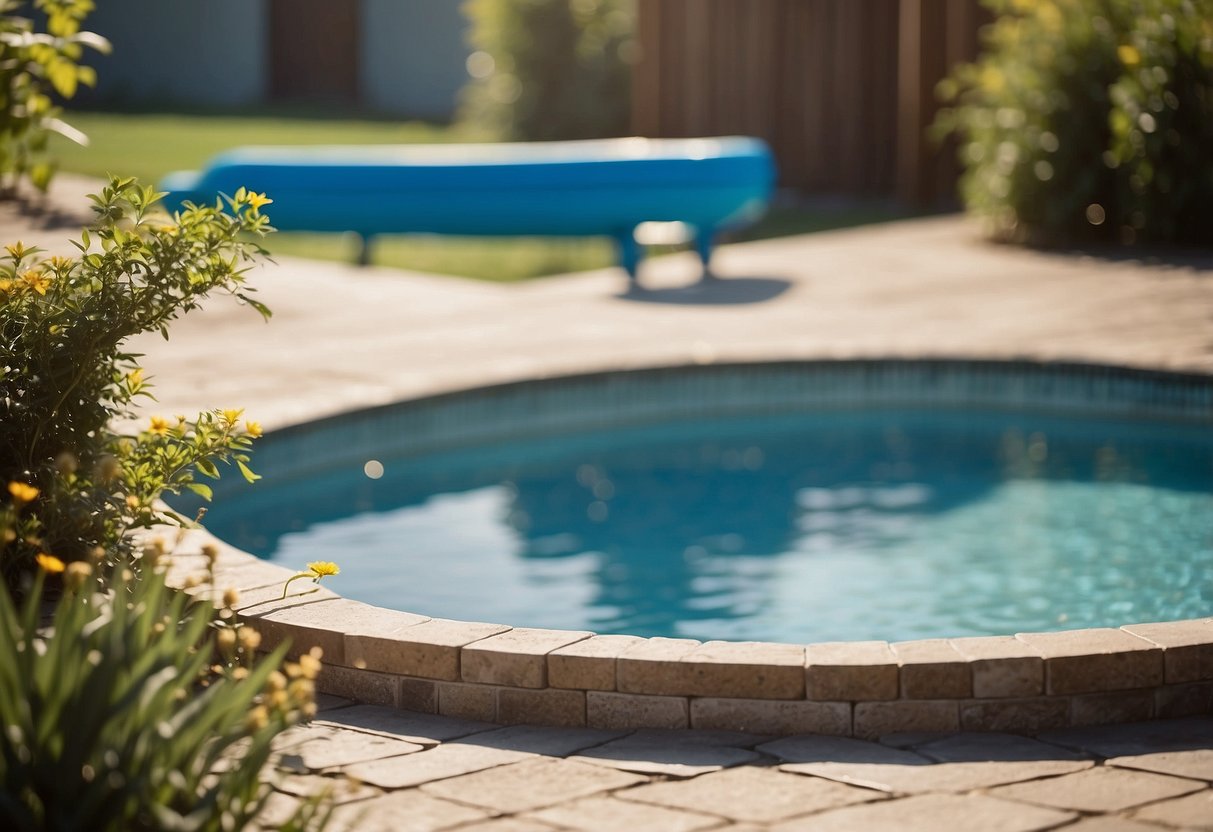When planning for an above-ground pool, the location is a crucial decision. Choosing a flat, level area is essential for proper installation. It ensures the pool stays stable and reduces the risk of accidents. Plus, a level surface makes the installation process smoother.

Another key factor is sunlight. Place the pool in a spot that gets plenty of sunlight during the day. This helps to naturally warm the water and makes swimming more enjoyable. Also, consider the proximity to trees and bushes, as falling leaves can increase maintenance.
Accessibility is also important. Ensure the pool is close to a water source and has enough space around it for safe entry and exit. Think about the pool’s visibility from your house for easy supervision and security.
Selecting the Optimal Location

Choosing the right spot for your above-ground pool is essential for both safety and enjoyment. Consider the space available, natural elements, and local regulations before beginning the installation process.
Evaluating Your Backyard Space
First, assess the available space in your backyard. Level ground is crucial as uneven surfaces can affect the pool’s stability. Ensure there is adequate room for the pool itself, plus any surrounding features like decking, fencing, and landscaping.
Consider safety; there should be enough space for safe entry and exit. Avoid placing the pool under overhead power lines. Check for enough clearance from eaves to prevent damage. Ensure the spot allows for easy supervision of swimmers.
Privacy is another factor; decide if you want the pool in a more secluded area. This helps with both safety and enjoyment.
Determining the Pool’s Position Relative to Natural Elements
The pool’s position relative to natural elements like sunlight, shade, and wind exposure can impact comfort and maintenance needs. Position the pool to get ample sun but not excessive heat. Too much shade can make the water cold and promote algae growth.
Watch out for tree roots that can intrude into the pool floor, causing damage over time. Avoid areas directly under trees to minimize leaves and debris falling into the pool. Assess the direction of prevailing winds, as strong winds can cool the water and increase evaporation.
Consider the pool’s proximity to water sources for easy filling and maintaining the proper water level.
Understanding Regulations and Preparing for Installation
Before starting, understand local building codes and setback requirements. Some areas require a certain distance from property lines, utilities, or other structures. Failure to comply could lead to fines or having to move the pool.
Permits are usually needed and should be obtained early. Confirm ground conditions to ensure they are suitable for a pool, avoiding sandy or unstable soil. A proper foundation is crucial. Prepare the area well to prevent corrosion and other long-term issues.
Consider accessibility for equipment and materials needed for installation. Whether opting for a DIY approach or hiring professionals, planning ensures a smooth setup and lasting enjoyment.
Planning for Pool Infrastructure and Maintenance

A well-planned pool infrastructure ensures longevity and ease of maintenance. Key aspects include solid foundations, proper equipment, and thoughtful accessories for an enjoyable and safe swimming experience.
Ensuring a Solid Foundation and Pool Longevity
Creating a solid foundation is crucial for the stability of an above-ground pool. Start with ground preparation by removing grass and debris. Ensure the area is level, using sand or gravel as a base. For additional support, consider a pool pad.
A retaining wall may be necessary on sloped areas to prevent soil erosion. Pools made from steel or aluminum offer durability, reducing the risk of rust. A level base helps in maintaining water balance, including pH and alkalinity. Proper drainage around the pool also prevents water from accumulating and causing damage.
Installing and Caring for Pool Equipment
Pump and filter installation is necessary for keeping pool water clean. The two main types of filters are sand filters and cartridge filters. Sand filters require periodic backwashing, while cartridge filters are easy to clean but may need frequent replacement.
A vacuum and skimmer are essential to remove debris. Regular chlorine treatment helps prevent algae growth. Using a pool cover can also reduce debris and maintain water temperature. For added safety, install alarms and fencing to supervise children and pets.
Enhancing the Pool Environment with Accessories and Features
Accessories enhance both the look and functionality of a pool. A deck offers a great space for lounge chairs and provides easy access to the pool. Adding a pool heater extends the swimming season by warming the water.
Safety features like a pool ladder and pool covers are necessary. Soft features, like fencing, enhance safety by restricting access. Pool accessories, such as pool toys, enrich the experience for family and friends. Consider budgeting for extra features to maximize enjoyment without overspending.

